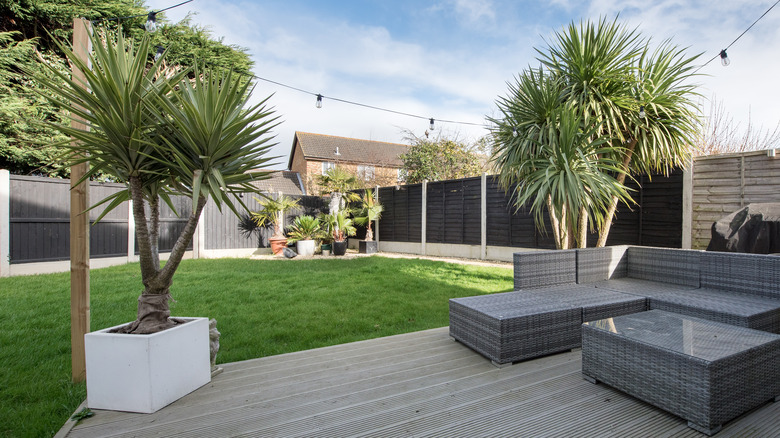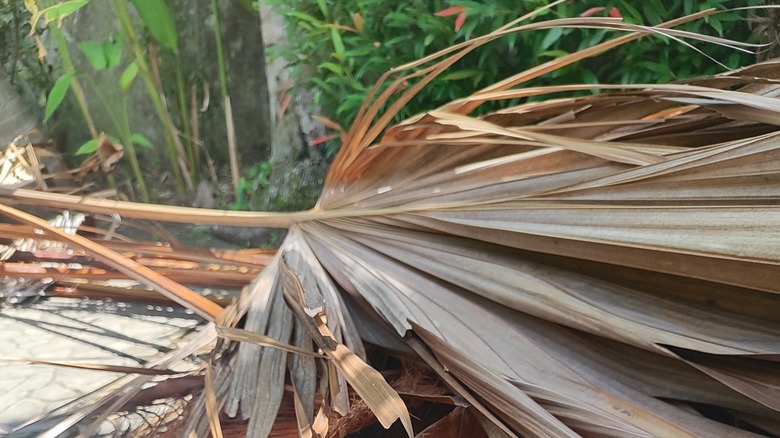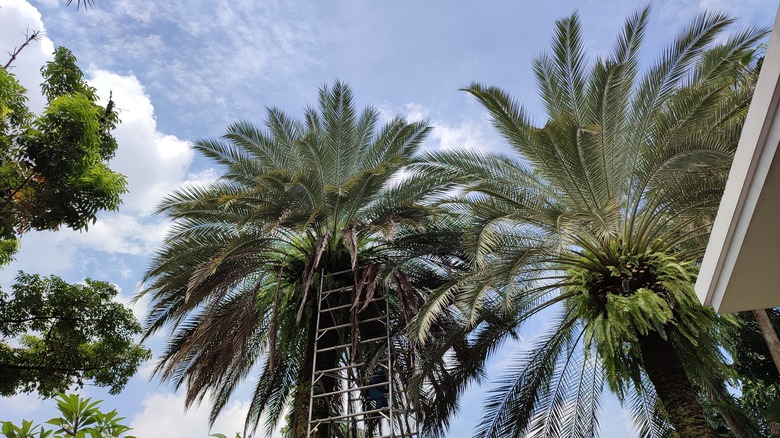How To Trim A Palm Tree The Right Way (& When You Should Be Doing It)
Turning your backyard into a palm tree oasis doesn't end with installing the palms. You also have to maintain your trees, or your oasis will turn brown and debris-filled. Trims are a key part of that maintenance; while they require some legwork, they'll make life for you (and your palm trees) much easier in the long run.
Some palm trees naturally lose their dead fronds, such as Royal palms and Christmas palms. But with others, you have to do it for them. Getting rid of these fronds helps keep the tree healthier for longer, as well as making it look more attractive. It reduces the likelihood of pests like sneaky snakes hiding in the dead growth and prevents falling fronds from hurting people, creating a fire hazard, or damaging your yard. You might also trim fruit clusters from the palm trees in your garden to reduce the amount of messy debris on the ground.
While trims are important, over-pruning can be even more damaging to the tree than not trimming it at all. Aim to trim your palm trees about once a year, and avoid cutting healthy growth. Here's how and when to do it.
The right place to trim a dead frond
Trimming your palm tree is a matter of cutting away brown fronds so that the plant's healthy growth can flourish. You can use regular garden clippers for smaller fronds and a chain saw or pole saw for larger fronds. Make sure to wear protective gear, including goggles and gloves. To avoid spreading diseases between trees, sterilize your equipment with a bleach solution before and after trimming.
Then, evaluate your tree to decide where to make your cuts. Facing the tree head-on, imagine a clock face on its front. Look for fronds that are hanging below the 9 o'clock and 3 o'clock positions. These lower-hanging fronds are prime candidates for trimming, particularly the brown ones. You can also remove brown fronds from higher up in the tree.
Trim close to the base of each frond, but don't cut into the healthy part of the tree. The general rule is to make your cut about 2 inches away from the trunk. For higher fronds, grab a sturdy ladder; don't attempt to climb the tree with climbing gear or you may damage it.
The best time to trim palm trees
Trims are a stressor for plants, so timing and technique are crucial. Spring is an ideal time because the tree is primed to recover more quickly and regain its strength. You can also support the tree's timely recovery by watering and fertilizing right after the trim.
Avoid removing too many fronds at once. If possible, don't remove healthy green fronds, as this can weaken the tree and reduce its ability to get energy from the sun. If you do have to trim green fronds, only cut those that are below the 9 o'clock and 3 o'clock positions on the tree.
Some people also practice "hurricane cutting," or trimming as many fronds as possible off of a tree before a hurricane to prevent wind damage. While it may be helpful to trim dead growth before a storm, it's still a bad idea to remove green fronds; rather than helping the tree withstand the storm, it leaves it more vulnerable.


